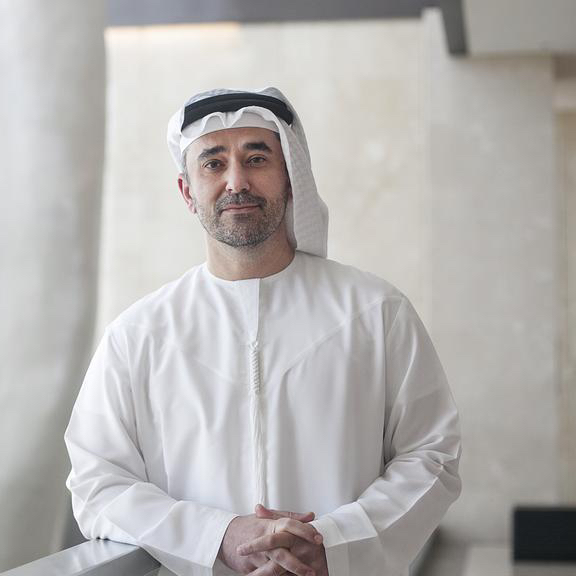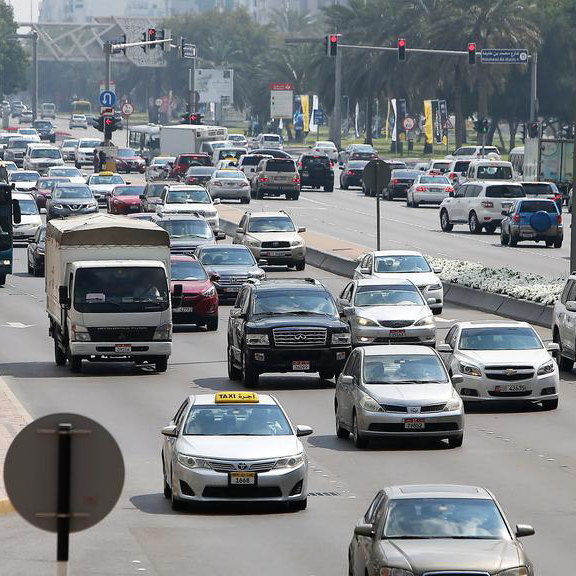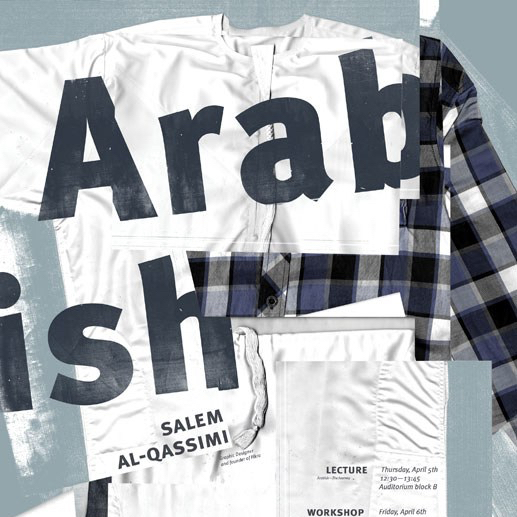Omar Ghobash wrote Letters to a Young Muslim while he was serving as the UAE’s ambassador to Russia out of a desire to prevent his son from succumbing to the perils of radicalisation. The book has won critical acclaim for its message of tolerance, writes Nick Leech.
If the level of publicity and media attention associated with the launch of a book is any measure of its success, then the UAE Ambassador’s to Russia, Omar Saif Ghobash, has every reason to be pleased.
Even before his Letters to a Young Muslim was published in January, Time magazine billed it as one of this year’s most anticipated books, alongside non-fiction works such as a memoir by transgender media celebrity Caitlyn Jenner and the latest novel by Paula Hawkins, author of the best-selling Girl on a Train.
Written by the 45-year-old diplomat as a series of informal letters to his teenage son, Saif, Letters to a Young Muslim can be seen as part of a literary tradition that extends back to Rainer Maria Rilke’s Letters to a Young Poet (1929).
It also includes more recent examples, such as Christopher Hitchen’s epistolatory blueprint for debate and dissent, Letter to a Young Contrarian (2001), and Ta-Nehisi Coates’ exploration of what it means to be black and American, Between the World and Me (2015).
“It has been very interesting. I’ve spent a long time thinking about these issues and I’ve been very pleased with the response,” says Mr Ghobash.
“The worst thing would have been if it had fallen flat, but the international response has been great.”
Far from falling flat, the book has been reviewed by the The New York Times and The Times of London and has earned Mr Ghobash an in-depth profile in the London newspaper, The Guardian, and appearances on CNN and National Public Radio, The Daily Show with Trevor Noah and the long-running PBS current affairs programme, Charlie Rose.
“People talk about a clash between civilisations but I actually think there is a clash within our own civilisation and within our own Islamic community,” Mr Ghobash told Pulitzer Prize-winning author Jon Meacham on a recent episode of the show.
“I think that’s particularly worrisome, but also tantalising in a way. There are 1.7 billion Muslims, and the kinds of ways that we discuss ideas hasn’t really progressed in the sense that there is a tremendous amount that is kept under wraps.”
The issue of language is central to Mr Ghobash’s analysis of the issues confronting Islam and the contemporary Arab world and provided him with the immediate inspiration for Letters to a Young Muslim, a project born of his desire to prevent his son from succumbing to the risks associated with radicalisation.
“I was listening to my kids coming back from their Arabic lessons and I thought, ‘This is terrible, nothing has changed in the last 30 years’.”
“Soon, you were coming back from school telling me what I had to do to be a ‘good Muslim’. You became a little aggressive and I began to realise that your mother and I were not the only ones bringing you up,” Mr Ghobash writes in his book.
“I had images of you running away to Syria, where people would exploit your good nature. I imagined you cutting yourself off from us, your family, because we were not strict enough Muslims according to the standards that you had picked up from these so-called teachers of yours.”
When his son brought home a book about Osama bin Laden and started to express respect for the founder of Al Qaeda and to defend some of his actions, he knew as a father that he had to act and his book is part of his response.
Creating a space where Muslims of all ages can discuss faith and issues that are often considered taboo, critically and without fear of condemnation, is one of the central tenets of what Mr Ghobash defines as his call for a “post-modern clarification” of Islam.
“I’m trying to legitimise the normal layperson’s approach to the world and to say that people shouldn’t allow themselves to be shamed or put under a spotlight as being a good Muslim or a bad Muslim by people who are simply shutting their eyes to the modern world,” he says. “It’s about having the right to engage in discussion about these very important issues without feeling as if we are children to be pushed around and shouted at if we ask a difficult question.”
In emphasising the importance of personal responsibility and insisting that there is no contradiction between faith and rational enquiry or modernity and tradition, Mr Ghobash’s approach is one that would appear to put him at odds with existing religious authorities.
But it’s a perspective, he insists, that is born of respect and necessity.
“At the moment, as far as I can tell, there are not really many clerics who are trying to accommodate modernity or really trying to understand how globalisation is affecting people’s lives and psychologies.
“And so I think that to ask them to come to terms with that is going to be difficult.”
Central to the accommodation for which Mr Ghobash is looking is a rejection of the certainties offered by extremism of all forms and a version of the faith that allows young Muslims to stay true to the tenets of Islam while navigating the doubts and uncertainties that beset them in the modern world.
“I’ve heard it from my conversations with young people over the past two years,” he says.
“Uncertainty is right at the heart of everything they do and they are barely holding it together.
“I’ve spent time with ex-members of the Muslim Brotherhood and people with PhDs in the sayings of the Prophet and they’ve all admitted to having to keep things a secret.
“‘I couldn’t tell anybody’, they say, ‘but I can tell you because you seem to be open to these ideas’.”
The failure to address the reality and needs of young people, whose reality has been transformed thanks to the impact of oil and the internet, has resulted, Mr Ghobash argues, in a generational crisis in which parents and children no longer understand one another and in a migration by young people away from the language and traditions of mainstream Islam.
“A remarkable number of Gulf Arab kids from wealthy families don’t speak Arabic any more and the wealthier you become, you migrate out of the region physically, because you spend your time in either America or Europe,” he says.
“You spend your time speaking English and you begin to think in terms that are very different from the structures of the traditional system.
“There is also a growing atheism in the Gulf and in Egypt at the moment but because of the way the Arabic language is so intertwined with religion it’s actually very difficult to pull off speaking Arabic and to be an atheist at the same time.
“So in migrating out of the faith, young people are also migrating out of their language.”
Despite his championing of Arabic and Islamic traditions, Mr Ghobash’s arguments are delivered in a language and a manner that speaks more about his education in England, where he studied at Rugby School, the University of Oxford and the University of London, than of his Emirati and Russian heritage.
But his decision to write his book in English and to pursue opportunities to discuss the issues it raises in the West have been made, Mr Ghobash insists, with a dual purpose.
“My publisher wanted to do an American launch first. From their perspective, that was the most interesting thing, to enter the American debate about Islam,” he says.
“But one of the key things that I really wanted to do was to insert myself, and the Emirates, into the global discussion about these issues,” the ambassador says before his latest local appearances at the Emirates Airline Festival of Literature and New York University Abu Dhabi.
“One of the things that I’ve noticed and still see is that most of the time when the region is discussed, it’s discussed by foreign expats from the region, but I wanted to contribute an Emirati voice.
“I also wanted to get the discussion going in the international Muslim community outside the Arab world and to put the issues of the Arab world and the Muslim community on the table from an Arab perspective.”
Mr Ghobash’s mother was Russian and his father, Saif Ghobash, the UAE’s first Foreign Minister, was killed at Abu Dhabi international airport in 1977 by a terrorist whose target was the Syrian minister with whom his father was travelling.
As well as establishing the Saif Ghobash Banipal Prize for Arab Literary translation in his father’s memory, Mr Ghobash is a sponsor of the International Prize for Arabic Fiction – an award described as the Arab Booker Prize – and serves on the advisory body of the International Centre for the Study of Radicalisation and Political Violence at King’s College London.
“I’m trying to give expression to an approach to the world that I’ve seen in the Emirates,” Mr Ghobash says.
“Obviously, there are elements that come from my personal life and the fact that I’m half Russian and an outsider, in a sense, but otherwise, what I’m talking about is pretty much what I have absorbed from many people here,” he says.
Mr Ghobash is encouraged by the responses the book has provoked among its target audience, Muslim youth.
“One of the things that is really interesting for me is to see the response of young Arabs in particular who are getting in touch with me and saying ‘Thank you for having voiced these issues, thank you for putting the words on my feelings and for giving me something to hold on to’,” Mr Ghobash says.
“I actually think that most people in this age have an awareness of the internal contradictions in the things they are being told and I don’t think that’s a big deal.
“I think that we all have the brain power and the cultural resources to find interesting answers to these questions.”
This article originally appeared in The National in 2017





